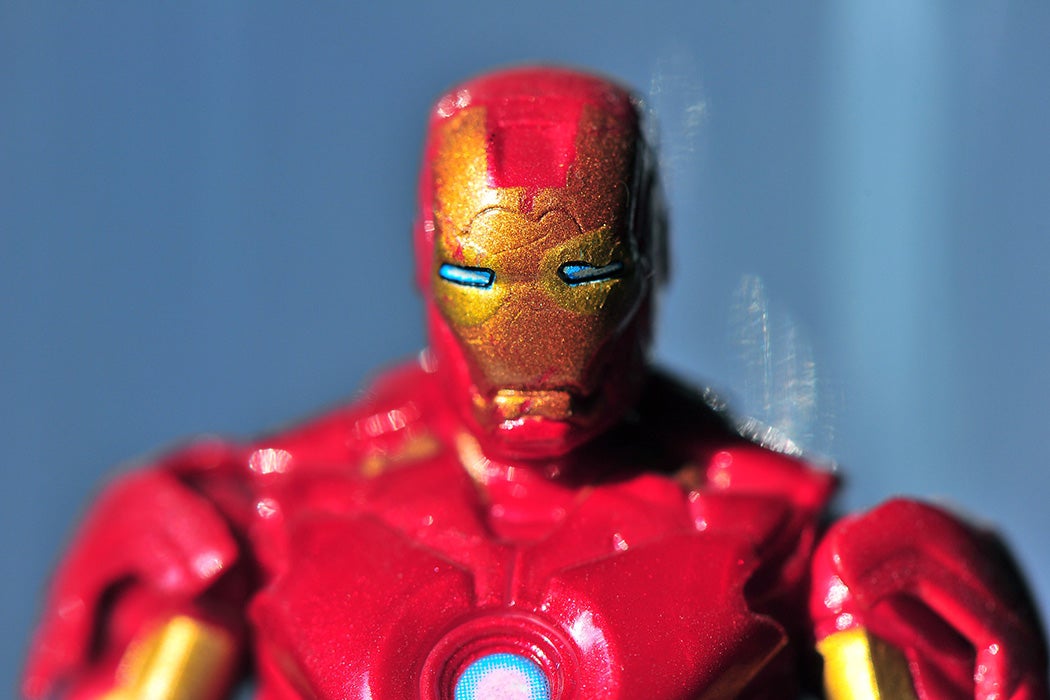Fifteen years ago, Marvel released its first Iron Man movie—commencing a series that would effectively revitalize a cult classic, explode with global accolades, and redefine the film franchise industry. Marvel Entertainment LLC, an enterprise that’s earned more than $28 billion on a global scale, is expanding its universe (MCU) to this day—now in Phase Five of its superhero film and television releases (Phase Six is slated to begin in 2024).
Marvel’s blockbusters aren’t famous just for their avant-garde music scores and special effects. Coextensively, the past decade-and-a-half has been a particularly ripe time to whet the world’s appetite for hegemonic supervision. Media Studies scholar Brett Pardy examines how the rising support for the growth of the MCU parallels a popular interest in neoliberal security. His argument rests on the idea of Hollywood “militainment,” which he sees as “a response to the cultural shift of militarization during the post-9/11 era, a time that needed to be secured in stories that would affirm militarized myths.” Many scholars contend that in this new age of hegemonic security, the army was centered as a symbol for American exceptionalism—grooming audiences to find entertainment in disaster.
Pardy focuses on the evolution of Iron Man to highlight the process of politicization of MCU films. The superhero, going from a standard protagonist in the ’60s to one of today’s flagship characters, is an industrialist known to be involved in arms deals; he’s a conflict tycoon. As Pardy reports, Marvel comic book writer Stan Lee “viewed the character as a challenge.” He created Iron Man as a response to the antipathy toward the military during the Cold War, as a dramatic portrayal of combative industrialism. When introduced as a part of a flagship storyline in the cinematic MCU, however, Iron Man was repurposed as a technocratic fantasy who stood for security and peace—a particularly palatable choice for twenty-first-century ideologies.
Alongside the rise of Iron Man are other subtle deviations from the comic books that demonstrate the militarization of MCU storylines. For instance, SHIELD, the governing body of the superheroes, was modified in both title and role, changing from “Supreme Headquarters, International Espionage, Law-Enforcement Division” in the comics to “Strategic Homeland Intervention, Enforcement and Logistics Division” in the films. This shift in language, Pardy asserts, both Americanizes the content (the gesture toward an international governing body remains muted in the movies) and creates a political context in which violence will be viewed “as necessary for American safety.”
Weekly Newsletter
Many critics have scrutinized the relationship between Marvel superheroes and American exceptionalism, even venturing to accuse the films of being military propaganda. But Pardy’s argument is nuanced: not all Marvel characters operate as a neoliberal mirage of American hegemony. Captain Marvel, for one, is largely anti-authority—offering a sort of counter-argument to the trope of MCU militarization. That being said, Pardy recognizes that such choices still contribute to how Marvel characters are perceived in relation to liberal values—and deliver a message of morality by way of superheroes.
“Even as the explicit militarization has been downplayed in subsequent films, the militarized logic of killing as a solution and the concept of ungrievable life remain present in Marvel’s films,” he concludes. So long as some greater good exists, killing is the endgame.
Support JSTOR Daily! Join our new membership program on Patreon today.







